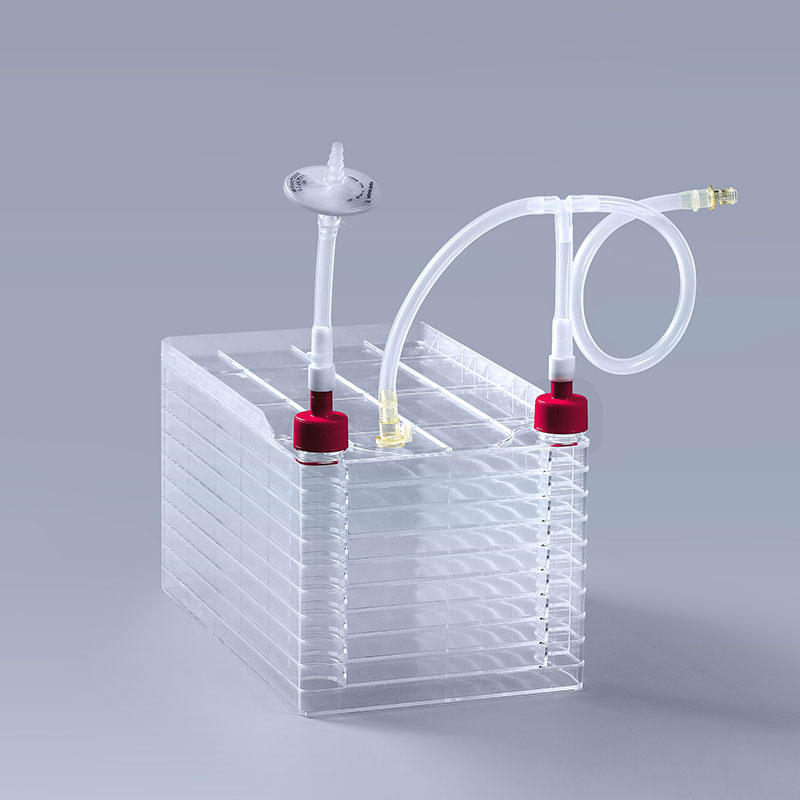A cell factory is a device used for biological manufacturing and production, commonly used in biotechnology and biopharmaceuticals. It is commonly used to culture and expand cells to produce target products such as proteins, antibodies, and so on.
This type of container is designed with a multi-layer structure and the layers are connected by a special gluing process to ensure a strong product. In order to improve the hydrophilicity of the container surface, which is more suitable for cell growth and propagation, this consumable will undergo a special surface treatment, which introduces hydrophilic groups on the hydrophobic surface to enhance the cell adhesion and make it easier for cells with low adhesion characteristics to adhere to the wall.

According to the different scale of culture, the common specifications of cell factories include 1 layer, 2 layers, 5 layers, 10 layers, 40 layers, 40 layers, etc. Different specifications of cell factories correspond to different culture areas, which are 635cm2, 1270cm2, 3175cm2, 6350cm2, 25400cm2, and in the actual application, we have to choose the corresponding specifications according to the specific needs of the product In practical application, we have to choose the appropriate specification according to the specific needs. It should be noted that, if it is a 40-layer product, it is difficult to operate manually after joining the culture medium, and it is usually with the help of automated equipment.
The above are the five common specifications of the cell factory, the specific choice of which specifications, according to the scale of cell culture to determine. It should be noted that, if it is more than 5 layers of specifications of the container, in order to reduce the risk of cell contamination, you can use a special piping system to achieve the transfer of liquid containment.
The FAI climbed 5.9 percent year-on-year in the first 11 months of 2018, quickening from the 5.7-percent growth in Jan-Oct, the National Bureau of Statistics (NBS) said Friday in an online statement.
The key indicator of investment, dubbed a major growth driver, hit the bottom in August and has since started to rebound steadily.
In the face of emerging economic challenges home and abroad, China has stepped up efforts to stabilize investment, in particular rolling out measures to motivate private investors and channel funds into infrastructure.
Friday's data showed private investment, accounting for more than 60 percent of the total FAI, expanded by a brisk 8.7 percent.
NBS spokesperson Mao Shengyong said funds into weak economic links registered rapid increases as investment in environmental protection and agriculture jumped 42 percent and 12.5 percent respectively, much faster than the average.
In breakdown, investment in high-tech and equipment manufacturing remained vigorous with 16.1-percent and 11.6-percent increases respectively in the first 11 months. Infrastructure investment gained 3.7 percent, staying flat. Investment in property development rose 9.7 percent, also unchanged.
 English
English


















































